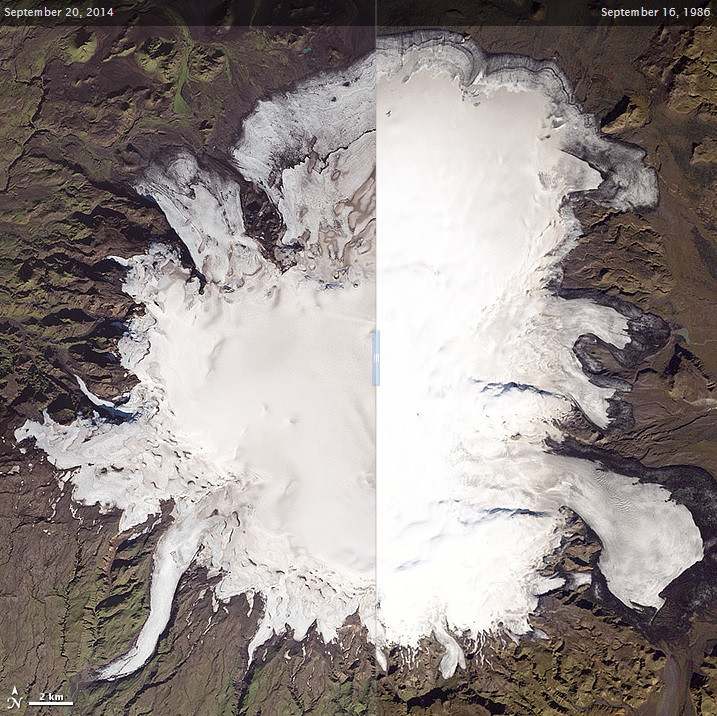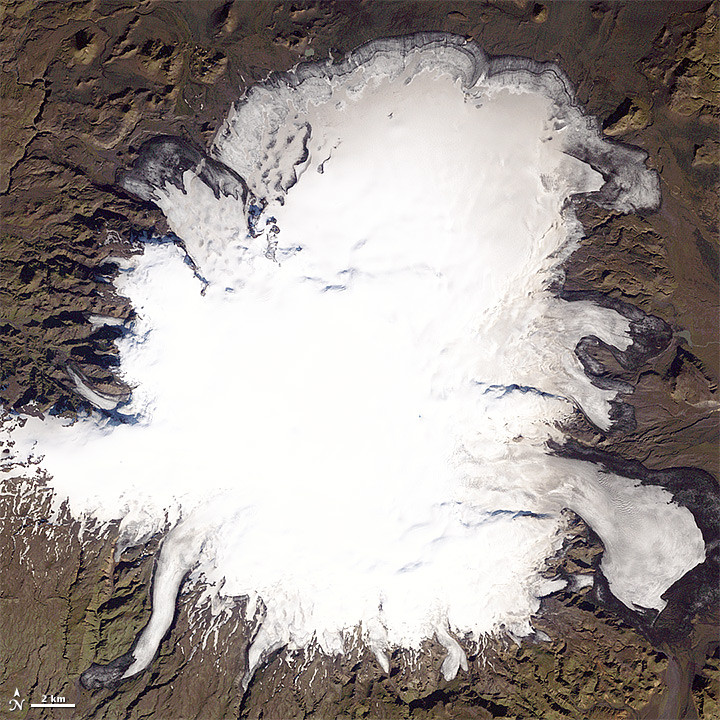Mýrdalsjökull Ice Cap: Iceland's Katla Volcano 'Due a Big Eruption'

A volcano sitting beneath Iceland's Mýrdalsjökull ice cap is due for a "big" eruption, Nasa has said.
Satellite images showing Mýrdalsjökull reveal the ice cap has shrunk dramatically over the last 30 years, and experts believe this is a result of recent volcanic episodes.
The images, from Nasa's Earth Observatory, show before and after photos of the ice cap – the first from September 2014, the second from September 1986.
More than half of Iceland's ice caps and glaciers sit either directly above or near active volcanoes, meaning fire and ice often unite.

Mýrdalsjökull sits above the Katla volcano, on the country's southern tip. This volcano normally erupts about twice every 100 years, with the last being in 1918.
Scientists say this indicates the volcano is due to blow: "Katla has been 'due' for a while now," said Throstur Thorsteinsson of the University of Iceland. "There have been episodes of seismic activity, but still no big eruptions."
Researchers say there have been signs of small glacial outburst floods – indicating small volcanic events are taking place, "but nothing has been well confirmed," Thorsteinsson said.

The latest image from September shows the southwest-central part of the ice cap with dimple like features known as ice cauldrons, which are caused by geothermal heat from the volcano. Along the northern part, ablation has exposed brown bands of ash deposited by past eruptions.
"A few of the bands are likely from Hekla, a stratovolcano with relatively frequent eruption events," Nasa said in a statement. "Across the middle of the ice cap, the dark surface can likely be attributed to more recent volcanic episodes."
Researchers also said global warming has led to the ice cap to retreat, with a steady decline since the 1990s.
© Copyright IBTimes 2025. All rights reserved.






















